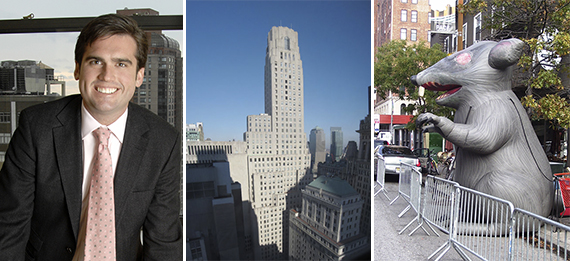Trending
Construction firm building 1 Wall Street incurs wrath of unions
Gilbane Building facing protests, inflatable rats

Work sites run by a Providence, R.I.-based contractor have become flashpoints in the union vs. nonunion construction battle in New York.
Union protesters have targeted Gilbane Building, a century-old, family owned construction firm currently working on about $1.1 billion worth of projects in the city, including Harry Macklowe’s 1 Wall Street residential conversion, the Wall Street Journal reported.
A protest in May drew 250 people, who marched from 1 Wall Street to the contractor’s downtown offices, joined by a pair of giant inflatable rats.
The firm has drawn unions’ ire for utilizing nonunion subcontractors on large projects, traditionally reserved for union shops, and for allegedly underpaying the workers it hires.
“They pride themselves at having an over-100-year history with the highest ethical standards,” Gary LaBarbera, head of the Building and Construction Trades Council, told the newspaper. “Then they go out and do the exact opposite.”
As land prices and other costs have skyrocketed, developers have increasingly turned to nonunion labor to save money. Gilbane executives argue the company is merely reducing waste, and that it adheres to the highest standards at its sites.
“We’re not doing union busting,” William Gilbane, who leads the company’s New York office, told the Journal. “We are very focused on putting the most qualified, responsible companies and people on our projects.” One key difference between union and nonunion, he added, was that the latter doesn’t need to adhere to some expensive rules that ratchet up costs, such as hiring laborers to push elevator buttons.
At 1 Wall Street, Macklowe is undertaking a $1.5 billion conversion that will create 524 residential units, the majority of which are slated to be condos, at the 944,000-square-foot former office building. [WSJ] – Ariel Stulberg




